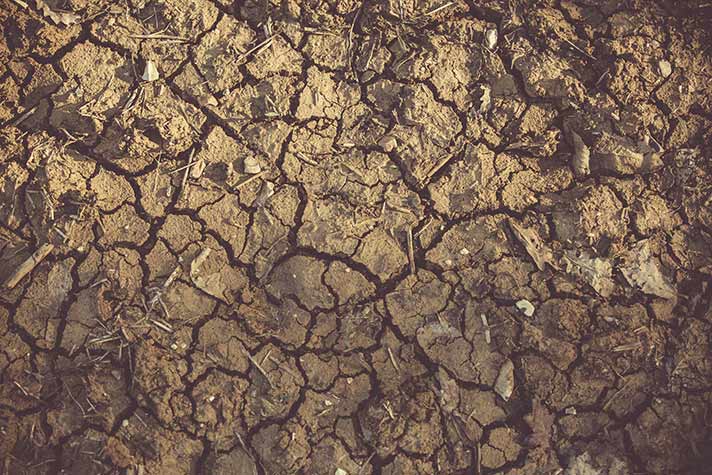A Few Minutes with the Mayor – August 2022
We are not currently experiencing a water shortage, but it is a situation we hear a lot about and discuss amongst ourselves. The hot, dry conditions of fire season bring thoughts of drought too close to home. Why is it important to know about drought and how we get to a drought situation? It’s important to fully understand what drought is so that we can manage our water use to help mitigate the effects of a possible drought. The spring rains we enjoyed recently were a boon for the local lakes and reservoirs we depend on for water. This means water levels are acceptable this year, but it is still important to continually manage our water supply.
Precipitation and temperature are the main drivers of drought. They largely determine snowpack, soil moisture, and streamflow levels. These factors are commonly used as indicators of drought. In Oregon, many watersheds depend heavily on snowpack for their annual water supply, and the timing or peak runoff from snowmelt is critical. In the case of severe or multi-year droughts, soil moisture does not recover in time for the next growing season. Groundwater levels do not rebound and refilling above-ground reservoirs can be difficult. All of these factors set the stage for forest fires, fewer crops, poor grazing conditions, decreased stream flows and habitat for fish, impaired water quality, and scarce supplies. Droughts are slow-moving disasters where impacts develop over time, persisting even after the rain and snow return. Building drought resiliency in Oregon will require monitoring and managing our water.
Water is life. We need water to live. We need water to grow the food we eat. We need water to maintain life for plants and animals. We use water for drinking, washing dishes, cooking, and bathing. Water is also used to help make some of the electricity we use for the lights in our houses. We need water for every type of industry, from farming to timber and factories. When we don’t have enough water for these activities, many people and many different aspects of life can be affected, directly or indirectly. Each way that drought affects us is what we call an “impact of drought.” Different drought impacts are often grouped as “economic,” “environmental” and “social.” All of these impacts must be considered in planning for and responding to drought conditions. We need to be mindful and pay attention to our water supplies.
Economic impacts are those impacts of drought that cost people (or businesses) money. Some examples of economic impacts include:
- Farmers losing money if a drought destroys their crops
- If a farmer’s water supply is too low, the farmer may have to spend more money on irrigation and to drill new wells
- Ranchers may have to spend more money on feed and water for their animals
- Businesses that depend on farming, like companies that make tractors and food, may lose business when drought damages crops or livestock
- People who work in the timber industry may be affected when wildfires destroy stands of timber
- Power companies that normally rely on hydroelectric power may have to spend more money on other fuel sources if drought dries up too much of the water supply. The power companies’ customers would also have to pay more.
- Water companies may have to spend money on new or additional water supplies
- Barges and ships may have difficulty navigating streams, rivers, and canals because of low water levels, which would also affect businesses that depend on water transportation for receiving or sending goods and materials
- People would have to pay more for food
Drought also affects the environment in many ways. Plants and animals depend on water, just like people. When a drought occurs, their food supply can shrink and their habitat can be damaged. Sometimes the damage is only temporary and their habitat and food supply return to normal when the drought is over. Sometimes drought’s impact on the environment can last a long time. Examples of environmental impacts include:
- Losses or destruction of fish and wildlife habitat
- Lack of food and drinking water for wild animals
- Increase in disease in wild animals, because of reduced food and water supplies
- Migration of wildlife
- Increased stress on endangered species or even extinction
- Lower water levels in reservoirs, lakes, and ponds
- Loss of wetlands
- More wildfires
- Wind and water erosion of soils
- Poor soil quality
Social impacts of drought are ways that drought affects people’s health and safety. Social impacts include public safety, health, conflicts between people when there isn’t enough water to go around, and changes in lifestyle. Examples of social impacts include:
- Anxiety or depression about economic losses caused by drought
- Health problems related to low water flows and poor water quality
- Health problems related to dust
- Loss of human life
- Threat to public safety from an increased number of forest and range fires
- Reduced incomes
- People may have to move from farms into cities, or from one city to another
- Fewer recreational activities
What can we do at home, or anywhere, to help mitigate unnecessary waste of water?
Inside your home:
Monitor your water bill. Check your monthly bill for unusually high water use. Monitoring your water bill will show you the amount of water you usually use. If your water use seems high, first determine if the increase is due to changes in your daily routine. If not, you may have a leak, inside or outside.
Periodically test and check for water leaks. It’s easy to do. Check your water meter before and after a two-hour period when no water is being used inside or outside. If the meter does not read exactly the same, you probably have a leak. Common household leaks include running toilets, dripping faucets, and other leaking valves. Conserve water and save money by repairing leaks immediately.
Toilet leaks are easy to detect. One way is to remove the tank lid and drop 10 drops of food coloring into the tank. Put the lid back on the toilet tank and check back in 10 to 15 minutes. If colored water from the tank has leaked into the toilet bowl, you have a leak.
If you are handy, grab a wrench to repair a leaky faucet. If you have a faulty faucet washer and your faucet doesn’t shut off properly, you may waste a lot of water. Washers are very inexpensive and can save up to 140 gallons per week.
Wash only full loads of laundry and dishes. The average American household uses about 23% of its water running the washer and dishwasher. Just one partially-full load can waste 5-10 gallons of water.
Turn off the faucet while brushing your teeth. This is one I continually remind myself about. You can save up to four gallons of water per minute. Multiply that by how many people live in your home and how many times a day they brush their teeth. It really adds up. The same goes for those of you who shave in the sink—don’t run the water!
Don’t loll in the shower, sure that warm water feels great, but it adds up.
Retrofit old showerheads, faucets, and sink aerators with water-efficient models. WaterSense (trademarked) models can save the average family 700 gallons of water each year. Replace old toilets. By using a Water-Sense model, you can reduce your family’s water consumption by close to 13,000 gallons a year.
Outside your home:
Check the condition of and repair your outside faucets, hoses, and irrigation system.
Consider installing a drip irrigation system, if you don’t have one. Adjust sprinkler heads, and water when it is cool. Water your lawn and garden, not the sidewalk or the street. Inspect your irrigation system for leaks, broken lines, or blockage in the lines. Adjust your watering schedule to match weather conditions and different seasons.
Water your established lawns about 1 inch per week, perhaps slightly more during hot, dry weather. Consult a local nursery for advice. Consider eliminating grass altogether. Look into xeriscaping, native plants, drought-tolerant plants, and Firewise gardens. A good example of a Firewise garden is at the corner of Doc Griffin Park at 260 S. 5th Street. Use mulch around trees and plants. Finally, only apply the amount of water your soil can absorb. Water thoroughly, but infrequently. If runoff or puddling occurs, break longer watering sessions into several short sessions, allowing water to soak in between sessions.
Again, we are not in a drought situation. I don’t mean to alarm anyone but wanted to share some thoughts and ideas with you. We are lucky that Jacksonville has a very active Water Management and Conservation Program in place. In this program, there are stages of conservation measures that consider water levels from normal to drought conditions. These levels may involve curtailment of certain activities in the event of drought and you would receive plenty of notice. Fortunately, we have two sources of water that Jacksonville obtains our supply from, and current water levels are decent this year. However, it just makes sense to understand drought and make conserving water a daily part of our lives. Thanks for taking the time to read this column.
Sources used include: The Oregon Water Resources Department, www.oregon.gov/owrd/programs/climate/droughtwatch, www.ready.gov/drought, www.jacksoncountyor.org/Departments/Watermaster/Current-Reservoir-Levels

 Donna Bowen is the current Mayor of Historic Jacksonville, Oregon. Please contact Mayor Bowen with any topics you would be interested in hearing more about in this column at mayor@jacksonvilleor.us.
Donna Bowen is the current Mayor of Historic Jacksonville, Oregon. Please contact Mayor Bowen with any topics you would be interested in hearing more about in this column at mayor@jacksonvilleor.us.